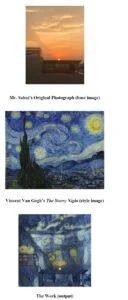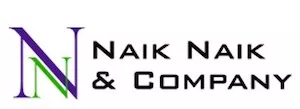In yet another instance, the United States Copyright Review Board in December last year refused to register a work generated with the help of an Artificial Intelligence based painting software called RAGHAV. The said application is owned by Ankit Sahni, an artist and lawyer, who sought to register the Work multiple times but was turned down every time, with this being the final refusal.
How 'The Work' Was Created
On December 1, 2021, Ankit Sahni filed an application to register a claim in the Work. In the application, he listed two authors: himself as the author of "photograph, 2-D artwork" and "RAGHAV Artificial Intelligence Painting App" as the author of "2-D artwork."
Mr. Sahni was identified as the sole copyright claimant because the application identified an artificial intelligence (AI) application as an author of the work. The Copyright Office registration specialist assigned to the application requested additional information from Mr. Sahni about his use of the RAGHAV Painting App in the creation of the Work. In response, Mr. Sahni submitted a 17-page document describing how RAGHAV app's technology functions and how he used the technology to create the Work.

As is explained in this AI Description, Mr. Sahni generated the Work by taking an original photograph that he authored, inputting that photograph into the RAGHAV app, then inputting a copy of painter Vincent Van Gogh's The Starry Night as the "style" input to be applied to the photograph, and choosing "a variable value determining the amount of style transfer." Mr. Sahni further explained that he named RAGHAV app as a co-author because its "contribution is distinct, disparate and independent" from his contribution to the Work.
Refusals From The Copyright Office
After considering the deposit, the application, and AI Description, the Copyright Office refused to register the Work because it "lacked the human authorship necessary to support a copyright claim." Initial letter refusing registration from US Copyright Office to Ankit Sahni was sent on June 29, 2022. Responding to Mr. Sahni's assertion that the Work included some human creative input, the Office explained that "this human authorship cannot be distinguished or separated from the final work produced by the computer program."
Thereafter, on September 27, 2022, Mr. Sahni requested that the Office reconsider its initial refusal to register the Work, arguing that "the human authorship requirement does not and cannot mean a work must be created entirely by a human author."
A letter was sent from Alex Garens to US Copyright Office dated September 27, 2022 arguing the Work was registerable because it was "the result of the creative and artistic choices and expressions of a human author". After reviewing the Work in light of the points raised in the First Request, the Office re-evaluated the claim and concluded that the Work could not be registered "because the work deposited is a derivative work that does not contain enough original human authorship to support a registration."
The Office found that the Work was a "classic example of derivative authorship" because it was a digital adaptation of a photograph. The Office analyzes derivative works by examining whether "the new authorship that the author contributed" meets the statutory requirements for protection. Because the new aspects of the Work were generated by "the RAGHAV app, and not Mr. Sahni—or any other human author," the Office found that the "derivative authorship was not the result of human creativity or authorship" and therefore not registerable.
Second Reconsideration
In a letter dated July 10, 2023, Mr. Sahni requested that, the Office reconsider for a second time its refusal to register the Work. Letter from Alex Garens to U.S. Copyright Office (July 10, 2023) ("Second Request"). The Second Request presented three arguments.
1. Mr. Sahni argued that RAGHAV served merely as an "assistive software tool," subject to creative decisions by Mr. Sahni in selecting his original photo, The Starry Night image as the style input, and setting the variable value for the amount of style transfer.
2. Mr. Sahni pointed to elements in the Work that he claims are human-authored. According to Mr. Sahni, he "provided the traditional elements of authorship for both the original photograph and the Work" by taking the original photograph and "directing the RAGHAV tool to make changes to the colors, shapes, and style in a particular manner."
3. Mr. Sahni argued that the Work is not a derivative work because the Work is not "substantially similar" to the original photograph. Rather, the original photograph is "an early stage of what would ultimately become the Work." He contended that he "intentionally took the original photograph as part of his process for creating the Work . . . akin to a painter making a sketch before completing a painting, or a sculptor assembling clay before finalizing the form." Therefore, the "human author's total creative input in both the original photograph and the Work should be considered together, and the Work should be analyzed for all the traditional elements of authorship present therein."
Conclusion of The Review Board
The Copyright Act protects, and the Office registers, "original works of authorship fixed in any tangible medium of expression." Courts have interpreted the statutory phrase "works of authorship" to require human creation of the work, the board observed.
The board referred to the US District Court's decision in Thaler v. Perlmutter, wherein it is stated that "human authorship is a bedrock requirement of copyright" in affirming the Office's refusal to register a work "autonomously" created by AI.
The Board was not convinced by Mr. Sahni's description of RAGHAV as "an assistive tool" that works similarly to "a camera, digital tablet, or a photo-editing software program"-
"As Mr. Sahni stated in his initial explanation, RAGHAV operates by "generating" a new pictorial image based on features learned from user-provided images. The underlying research that RAGHAV was built on is premised on the same functionality: it is the AI model, not its user, that "predict[s] stylizations for paintings and textures never previously observed," and that predictive function is tied to "the proximity of the [style image] to styles trained on by the model."
Moreover, the board noted-
"While Mr. Sahni emphasizes his specific choices of image inputs and filter strength as one choice "from nearly infinite permutations and possibilities of specific inputs," these choices only constitute an unprotectable idea for the Work, that is: an altered version of his photograph in the style of The Starry Night. But copyright does not protect the concept reflected in a work—"protection is given only to the expression of the idea—not the idea itself. (Mazer v. Stein and Herbert Rosenthal Jewelry Corp. v. Kalpakian)
Nor does the Board agree with Mr. Sahni that his original photograph was "not a preexisting work" and that its expressive elements that also appear in the Work are therefore a basis for registration. Mr. Sahni is welcome to apply to register his photograph, assuming it meets all statutory requirements, but he cannot register the AI-modified version before the Board. Because Mr. Sahni exerted insufficient creative control over RAGHAV's creation of the Work, he cannot register it."
Finally, the Review Board affirmed the refusal to register the copyright claim in the Work.
Click Here To Read The Order
The content of this article is intended to provide a general guide to the subject matter. Specialist advice should be sought about your specific circumstances.

